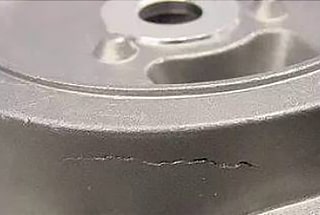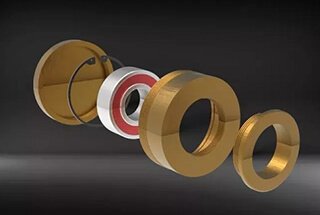The table below presents the heat treatment information for various types of steels commonly used in machining, such as stainless steel, carbon structural steel, carbon tool steel, alloy carburized steel, die steel, quenched and tempered steel, spring steel, nitrided steel, alloy cutting tool steel, and bearing steel.
The data includes details on annealing temperature, quenching temperature, martensite point, and tempering temperature.
Heat treatment chart for stainless steel
Steel type Stainless steel Steel grade 1Cr15 2Cr13 3Cr13 1Cr18Ni9Ti 4Cr13 Annealing temperature780 850 780 850 780 850 820 Quenching temperature 1020 1050 1050 1050 Martensite point350 350 240 270 Tempering temperature ℃ 150 Hardness after tempering HRC 58 200 41 47 52 57 250 56 300 40 46 51 55 350 54 400 39 44 50 54 450 53 500 38 42 49 50 550 31 37 43 45 600 24 28 34 40 650 22 24 30 38
Heat treatment chart for carbon steel
Steel type Carbon structural steel Carbon tool steel Steel grade 35 45 50 T8 T12 40 T7 T10 Annealing temperature 880 positive 860 positive 840 positive 760 770 Quenching temperature 850 840 830 780 780 Martensite point 350 340 320 230 210 Tempering temperature ℃ 150 Hardness after tempering HRC 52 57 58 62 64 200 50 56 57 60 62 250 48 54 54 57 60 300 46 48 51 55 57 350 43 45 46 51 53 400 39 41 43 47 49 450 34 36 38 42 44 500 30 32 34 38 39 550 26 28 30 34 35 600 22 24 25 29 31 650 18 20 21 25 28
Heat treatment chart for alloy carbon steel
Steel type Alloy carbon steel Steel grade 20Mn2TiB 18CrNiw 20Cr 20Cr 25CrNiW 18CrMnTi 205iMnV1 30CrMnMoTi Annealing temperature 900 positive 900 positive 900 positive 940 positive 850 Quenching temperature 860 860 880 800 850 Martensite point 360 310 380 300 Tempering temperature ℃ 150 Hardness after tempering HRC 44 45 47 63 50 200 42 44 45 59 48 250 41 43 42 56 45 300 40 42 40 54 43 350 39 41 38 53 40 400 39 40 51 38 450 38 39 49 36 500 36 37 46 34 550 32 33 30 600 28 30 27 650 25 26 24
Heat treatment chart for die steel
Steel type Die steel Steel grade Cr12 type 3Cr2W8 5CrMnMo 8Cr3 Cr9si2 5CrNiMo 7Cr3 Annealing temperature 860 820 850 830 800 Quenching temperature 1000 1080 850 870 1070 Martensite point 220 360 220 220 Tempering temperature ℃ 150 Hardness after tempering HRC 63 52 59 62 62 200 61 49 58 60 61 250 60 48 56 59 60 300 59 48 53 58 59 350 58 47 51 56 58 400 58 46 48 53 54 450 57 44 45 50 50 500 56 45 42 47 47 550 53 48 39 45 43 600 50 45 35 41 39
Heat treatment chart for quenched and tempered steel
Steel type Quenched and tempered steelSteel grade 30CrNi3 35CrMnSi 37CrNiB 40Cr 45Cr 30CrMnNi2MoV 30CrMnSi 35CrMo 50B 45Mn2 Annealing temperature 820 860 820 840 840 Quenching temperature 860 880 860 850 850 Martensite point 300 360 270 320 310 Tempering temperature ℃ 150 Hardness after tempering HRC 51 54 51 54 56 200 50 53 50 51 54 250 48 51 48 48 53 300 46 48 46 47 51 350 44 46 43 46 49 400 42 44 41 43 48 450 39 41 39 42 46 500 35 38 37 38 44 550 32 35 34 34 40 600 27 28 29 31 35 650 25 27 25 25 28
Heat treatment chart for spring steel & nitrided steel
Steel type Spring steel Nitrided steel Steel grade 50CrV 60Si2Mn 65Mn 38CrAl 55Si2Mn 60Mn 38CrMoAl annealing temperature 860 810 810 950 positive quenching temperature 860 860 810 940 Martensite point 300 300 270 360 Tempering temperature ℃ 150 Hardness after tempering HRC 57 62 61 57 200 55 59 58 55 250 53 57 56 53 300 51 55 54 51 350 48 51 50 48 400 46 48 47 46 450 43 45 43 43 500 40 41 38 40 550 36 37 34 36 600 32 33 30 34 650 30 31 26 30
Steel type Alloy cutting tool steel Bearing steel Steel grade 9Crsi CrMn SiMn GCr15 GCr15SiMn CrWMn CrW5 Cr20 Annealing temperature 800 790 800 790 790 Quenching temperature 860 840 850 850 830 Martensite point 170 250 240 240 200 Tempering temperature ℃ 150 Hardness after tempering HRC 64 64 65 63 64 200 63 62 63 61 63 250 61 60 61 59 62 300 59 58 59 55 59 350 56 55 56 52 53 400 54 53 54 49 51 450 51 50 51 45 500 48 47 48 41 550 44 43 44 36 600 40 39 40 28 650 36 35 36 26
Heat treatment chart for spring steel
Steel type name Spring steel Nitrided steel Steel grade 50CrV 60Si2Mn 65Mn 38CrAl 55Si2Mn 60Mn 38CrMoAl Annealing temperature 860 810 810 950 positive Quenching temperature 860 860 810 940 Martensite point 300 300 270 360 Tempering temperature ℃ 150 Hardness after tempering HRC 57 62 61 57 200 55 59 58 55 250 53 57 56 53 300 51 55 54 51 350 48 51 50 48 400 46 48 47 46 450 43 45 43 43 500 40 41 38 40 550 36 37 34 36 600 32 33 30 34 650 30 31 26 30



